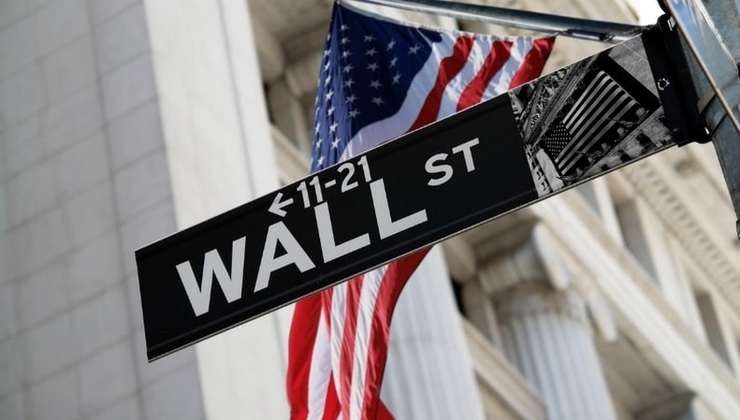- English
- Italiano
- Español
- Français
Analysis
Despite domestic lockdowns and pandemic uncertainties, the AUD continues to forge a path higher. Some of this is a USD story, some is a pandemic recovery story, some is a commodity story. Here’s some food for thought for AUD traders.
Daily chart: AUDUSD. Chart source data: Metaquotes MT5.
The Australian dollar has been a rising phoenix since the March crash. It’s rebounded from its all time lows of US 0.55 cents in March all the way to breaking above 0.72 in the session this morning. AUDUSD had reclaimed all losses 2020 losses by early June and at the current valuation of 0.72, it’s the highest since February 2019.
The AUD is a global risk proxy. Since the market crash in March, AUDUSD has more or less moved in the same direction as the S&P 500 (US500). If the benchmark index trades higher on the day, AUD often does too. The idea of risk-on markets might be confusing when we’re also seeing safe havens and US Treasuries trade higher, but our low interest rate world leaves investors little choice. With such little return on safe assets like cash and government bonds, investors are tempted into equities despite the earnings crash. It might not be a typical risk-on mood, but while US equities move higher, the AUD tends to be doing the same.
The US dollar story
A weaker US dollar is causing almost everything else to gain at its expense. It’s a strange new world where both risk assets and safe havens like gold and the JPY are moving higher together. It’s anyone’s guess how long this persists, but it’s where we find ourselves right now.
There’s plenty of risk to hedge. Traders are cautious of excessive monetary and fiscal policy, inflation risks, geopolitical tensions, pandemic uncertainties, and an upcoming US election. That’s one part of the weaker USD story, but we also need to consider US performance against the rest of the world. For years against a backdrop of slow global growth, the US has been seen as the best house in a bad neighbourhood. This could all change as markets emerge from the COVID crisis. The US looks set to have a longer, slower recovery after the pandemic compared to the rest of the world such as Europe and Australia which are seeing lower case numbers and in some areas reopening economies.
But in the short-term, the USD does look oversold and underloved for now at least. A little bit of risk aversion kicking in and we could see a small correction in the form of the USD correcting a little higher. It’s something to keep an eye on, particularly to manage risk exposures, and particularly because the AUD is super sensitive to risk sentiment. Risk on and the AUD is quickly bullish; risk-off and it can fall fast.
The commodity story
Commodity prices are booming, and Australia is a big exporter of raw materials. In fact, it’s the world’s largest iron ore exporter and prices are at their highest since last August, sitting just below 110 USD per tonne. Not only is continued demand from neighbouring China looking promising, but potentially from many other countries embarking on infrastructure projects as part of fiscal recovery packages.
If the world needs raw materials, Australia can provide them. Booming commodity prices suggest markets may be about to enter a commodity supercycle. Although that’s yet to be seen, it’s promising for the AUD and its exports if it eventuates.
When thinking about a commodity recovery post-COVID, I like looking at AUDCAD. Both are commodity currencies, but the Canadian dollar is more linked to oil prices. And if any commodity is to be left behind in the supercycle, it’s oil. Not only have lockdowns and travel restrictions significantly reduced consumer demand, but oil producing nations continue to oversupply markets with oil no one really needs right now.
Daily chart: AUDCAD. Chart source data: Metaquotes MT5.
It’s been onwards and upwards for AUDCAD, and to me this is a story of a divergence in the commodity recovery. Of course the AUDUSD risk play is exaggerating the trend here, and if that were to reverse we could see a sharp reversal here. That said, I’ve been liking AUDCAD pullbacks.
Yesterday’s steep increase came on AUD strength while the CAD weakened - and the oil market tells us why. The CAD is influenced by movement in US oil prices (WTI crude - XTIUSD), where futures fell almost 3 USD on the day before reclaiming about half the losses.
AUDNZD and central bank divergence
This is a fascinating pair, especially when you consider the country’s very different COVID recoveries. New Zealand has eliminated community transmission and the economy is completely open, except to international travel of course. Meanwhile Australia is fighting a second wave and many areas are going back into lockdown.
Daily chart: AUDNZD. Chart source data: Metaquotes MT5.
Despite the divergence and increasing cost of COVID to Australia, the AUD remains strong against the kiwi. And there are many reasons for this. New Zealand’s economy is very exposed to tourism, so that’s a huge demand for the currency lost for the foreseeable future. Australia also has closed borders, but on the other hand commodity exports are booming. There’s also central bank divergence at play here: the RBNZ has been notably more dovish than its Australian counterpart, even instructing local banks to prepare for negative interest rates. The AUD’s larger exposure to risk sentiment is another factor.
Recovery and beyond
In the years after the GFC, AUDUSD traded to parity and beyond. Not only was the USD subdued in the years after the virus, but Australia was benefitting from continued trade with China. Of course no two crises are the same. Australia was insulated from a recession after the GFC, this time it’ not been so lucky. A trip to parity might be a little far-fetched this time, especially because AUDUSD is rebounding from an even lower low, but a trip towards 0.9000 over time could well be on the cards.
Monthly chart: AUDUSD. The Australian dollar traded to parity and higher against the US dollar in the years following the GFC, briefly surpassing a value of 1.10. Chart source data: Metaquotes MT5.
If these themes persist, there’s a case for a weaker USD in the months and years to come, and on the other side of that a stronger AUD - especially if markets are in fact on the cusp of a commodity supercycle.
Related articles
Ready to trade?
It's quick and easy to get started. Apply in minutes with our simple application process.
The material provided here has not been prepared in accordance with legal requirements designed to promote the independence of investment research and as such is considered to be a marketing communication. Whilst it is not subject to any prohibition on dealing ahead of the dissemination of investment research we will not seek to take any advantage before providing it to our clients.
Pepperstone doesn’t represent that the material provided here is accurate, current or complete, and therefore shouldn’t be relied upon as such. The information, whether from a third party or not, isn’t to be considered as a recommendation; or an offer to buy or sell; or the solicitation of an offer to buy or sell any security, financial product or instrument; or to participate in any particular trading strategy. It does not take into account readers’ financial situation or investment objectives. We advise any readers of this content to seek their own advice. Without the approval of Pepperstone, reproduction or redistribution of this information isn’t permitted.


